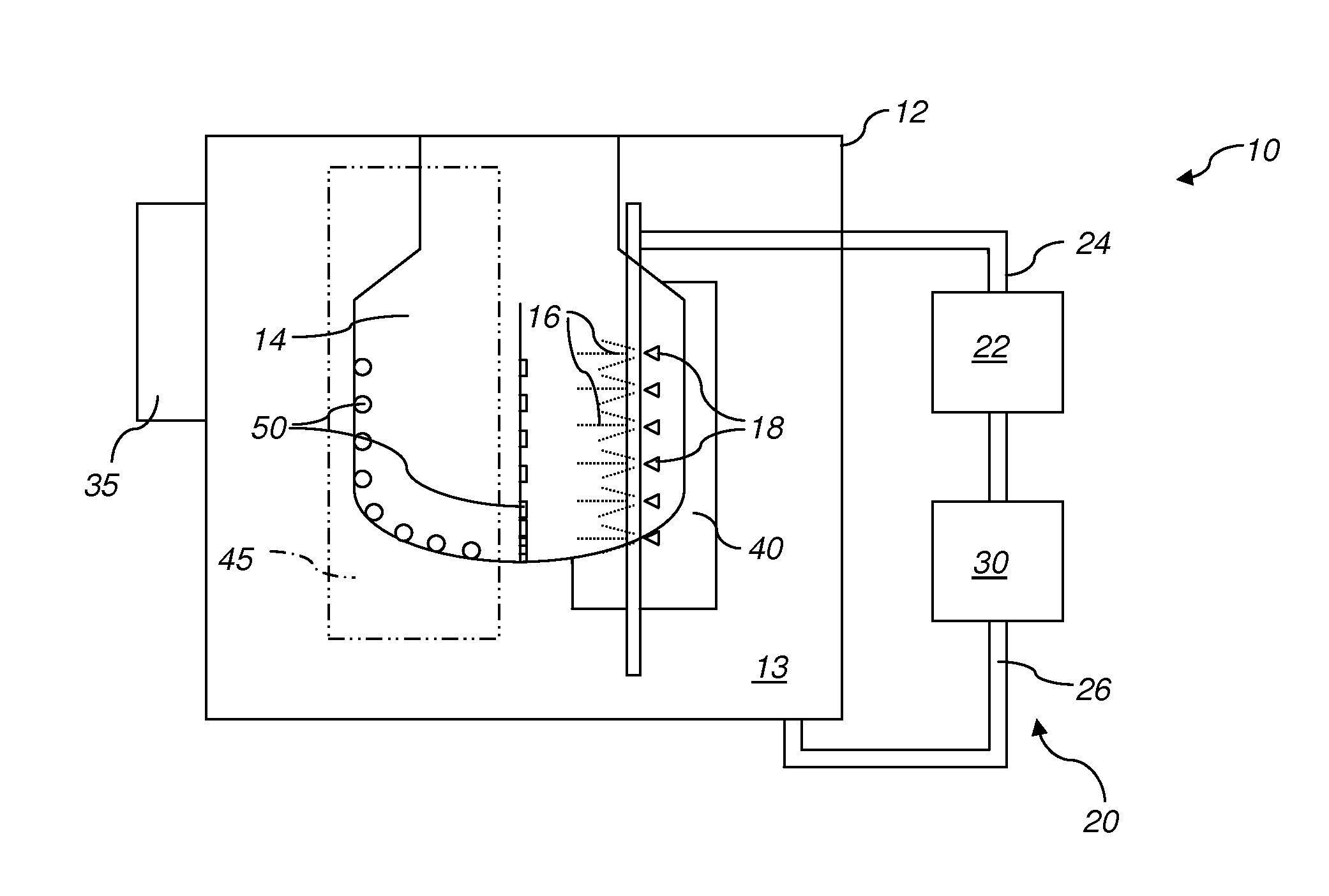Methods and systems for removing diamond-diamond bonding catalysts from polycrystalline diamond
a diamond bonding catalyst and diamond technology, applied in the field of methods and systems for removing diamond-diamond bonding catalysts from polycrystalline diamond, can solve the problems of limited depth to which cobalt can be removed from a pdc by state-of-the-art leaching process, and the potential for damage to pdc during use, so as to facilitate the formation of diamond-diamond bonds
- Summary
- Abstract
- Description
- Claims
- Application Information
AI Technical Summary
Benefits of technology
Problems solved by technology
Method used
Image
Examples
Embodiment Construction
[0020]FIGS. 1 and 2 illustrate embodiments of leaching systems 10 and 10′, respectively, for removing cobalt from one or more PDCs. A leaching system 10, 10′, etc., that incorporates teachings of this disclosure may comprise a hot hole simulator. Each leaching system 10, 10′ includes a container 12, 12′ that is configured to artificially simulate a hot hole drilling environment. Each container 12, 12′ includes an interior 13, 13′ configured to receive and hold one or more PDCs 50 (or other structures that include polycrystalline diamond) in a manner that facilitates or enables exposure of each PDC 50 to a leaching agent and / or to leaching conditions.
[0021]As shown by FIG. 2, a container 12′ may include a support 14′ within its interior 13′. The support 14′ may be configured to hold one or more PDCs 50 in place during the leaching process. In a specific embodiment, the support 14′ may comprise or be configured to at least functionally resemble a bit body (e.g., a bit body of a rotary...
PUM
| Property | Measurement | Unit |
|---|---|---|
| temperature | aaaaa | aaaaa |
| temperature | aaaaa | aaaaa |
| temperature | aaaaa | aaaaa |
Abstract
Description
Claims
Application Information
 Login to View More
Login to View More - R&D Engineer
- R&D Manager
- IP Professional
- Industry Leading Data Capabilities
- Powerful AI technology
- Patent DNA Extraction
Browse by: Latest US Patents, China's latest patents, Technical Efficacy Thesaurus, Application Domain, Technology Topic, Popular Technical Reports.
© 2024 PatSnap. All rights reserved.Legal|Privacy policy|Modern Slavery Act Transparency Statement|Sitemap|About US| Contact US: help@patsnap.com









